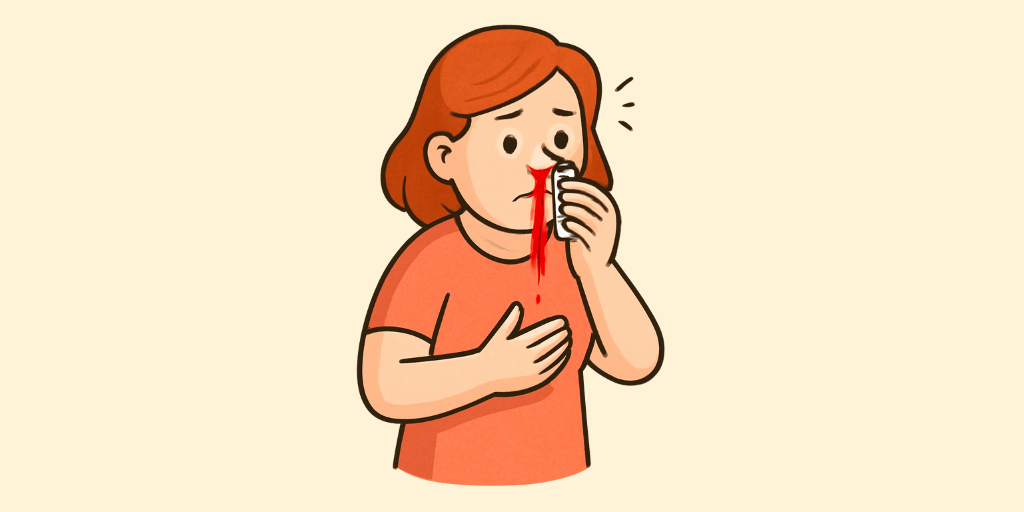Ayurvedic Name: Raktapitta
Description:
Raktapitta is a bleeding disorder resulting from Pitta Dosha vitiation, which leads to excessive heat and blood vessel rupture. It manifests as nosebleeds, heavy menstrual bleeding, blood in urine or stool, and hemorrhagic conditions. Aggravating factors include excessive heat exposure, spicy foods, alcohol consumption, and emotional stress. Treatment involves Sheetala (cooling) therapies, blood purifiers, and diet modifications to balance Pitta.
Signs & Symptoms:
- Raktapitta (Bleeding): Spontaneous bleeding from the gums, nose, or other mucous membranes.
- Vishabha (Bruising): Formation of bruises with minimal or no injury.
- Rakta Prakopa (Blood Thinning): Excessive bleeding during menstruation or after minor cuts.
- Aruchi (Loss of Appetite): Reduced appetite, particularly when bleeding occurs internally or externally.
- Shwasa (Breathlessness): Difficulty in breathing due to a lack of red blood cells and oxygenation.
- Rakta Shonita (Redness in Skin): Skin becomes red and inflamed in areas where blood accumulates.
- Kshamata (Fatigue): Generalized weakness or tiredness due to blood loss.
- Karna Kshweda (Tinnitus): Ringing in the ears due to reduced oxygen supply to the brain.
Diagnosis:
Platelet Count and Prothrombin Time (PT/INR)
Risk Factors:
- Dietary Factors
Excessive intake of spicy, hot, or sour foods that can aggravate Pitta dosha, leading to internal bleeding or blood thinning.
High consumption of alcohol, which can irritate the liver and promote bleeding tendencies. - Lifestyle Factors
Excessive physical strain or injury leading to spontaneous bleeding.
Chronic stress, which can elevate Pitta and contribute to inflammatory responses causing bleeding. - Medical Conditions
Liver diseases (e.g., cirrhosis, hepatitis) that impair blood clotting.
Hemophilia or other inherited blood disorders that increase the risk of spontaneous bleeding.
Complications:
- Excessive Blood Loss (Rakta Kshaya): Severe bleeding due to uncontrolled Raktapitta can lead to anemia or hypovolemic shock.
- Organ Damage (Anga Vikruti): Continuous or severe bleeding can cause damage to organs like the liver, kidneys, or heart due to prolonged blood loss.
- Fatigue (Dourbalya): Ongoing bleeding leads to chronic fatigue due to reduced red blood cells and oxygen transport.
- Clotting Disorders (Raktavaha Dushana): Long-term blood disorders can result in difficulties in blood clotting, causing internal bleeding or hematomas.
- Sepsis (Vishama Jwara): Persistent bleeding and inflammation can increase the risk of systemic infections leading to sepsis.
Epidemeology:
More common in individuals with liver diseases such as cirrhosis, hepatitis, or hemophilia.
Affects both men and women, but conditions like liver disease may be more prevalent in men due to higher alcohol consumption.
Incidence increases with age, especially in individuals over 50, due to accumulated risk factors like alcohol use and chronic disease.
Approximately 1% of the global population is affected by bleeding disorders related to liver function or blood clotting conditions

